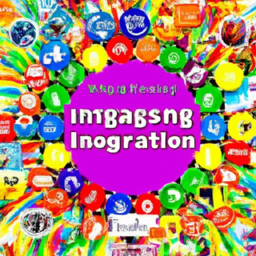Diversifying Digital Advertising Platforms for Maximum Reach
With the ever-expanding digital landscape, advertising has become an essential component of any successful business’s marketing strategy. Gone are the days when traditional advertising methods alone could guarantee maximum reach and customer engagement. In today’s world, diversifying your advertising platforms is crucial to stay ahead of the competition and reach your target audience effectively.
Why is diversifying advertising platforms important?
1. Increased reach: By diversifying your advertising platforms, you expand your reach across various channels, allowing you to connect with a wider audience. Each platform attracts different users with unique demographics, interests, and online behaviors. By being present on multiple platforms, you increase the chances of reaching potential customers who may not be active on a single platform.
2. Reduced dependency: Relying solely on one advertising platform can be risky. Platforms and algorithms change frequently, making it unpredictable to maintain steady advertising performance. By diversifying, you can reduce the impact of any sudden changes or disruptions that may occur on a single platform, ensuring that your advertising efforts remain effective.
3. Improved targeting: Different advertising platforms offer a variety of targeting options to reach specific audiences based on their interests, demographics, and online behaviors. By diversifying your platforms, you can explore and experiment with different targeting options, optimizing your marketing campaigns to effectively connect with your desired audience segments.
4. Better data analytics: Each platform provides its own analytics tools, allowing you to gain valuable insights into the performance and effectiveness of your campaigns. By diversifying across various platforms, you can access multiple sets of data, compare results, and gain a comprehensive understanding of your audience’s preferences and behaviors. This data-driven approach helps you make informed decisions and refine your marketing strategies for maximum impact.
5. Optimized budget allocation: Not all platforms perform equally for every business. By diversifying your advertising platforms, you can distribute your marketing budget wisely. You can allocate more budget to platforms that yield better results and adjust spending on underperforming ones. This flexibility enables you to optimize your budget allocation and maximize your return on investment.
How to diversify your digital advertising platforms?
When it comes to diversifying your advertising platforms, here are a few steps you can take:
1. Understand your target audience:
Identify your target audience’s demographics, interests, and online behavior. This will help you choose the platforms they are most likely to engage with.
2. Research and identify suitable platforms:
Conduct research to determine which platforms your target audience is active on. Consider popular social media platforms, search engines, content networks, and niche industry websites.
3. Test and experiment:
Start by running small-scale campaigns on different platforms to test their effectiveness. Experiment with different messaging, visuals, and targeting options to optimize your campaigns.
4. Monitor and analyze:
Regularly monitor and analyze the performance of your campaigns on each platform. Utilize the analytics tools provided by each platform to gain insights into audience engagement, conversions, and ROI.
5. Optimize and refine:
Based on your analysis, optimize your campaigns by allocating more resources to platforms that deliver better results. Continuously refine your targeting strategies and messaging to better connect with your target audience.
In conclusion, diversifying your advertising platforms is vital to maximize your reach, reduce dependency, improve targeting, utilize data analytics, and optimize budget allocation. By spreading your marketing efforts across various platforms, you can ensure a more effective and comprehensive approach to reaching and engaging with your target audience.


